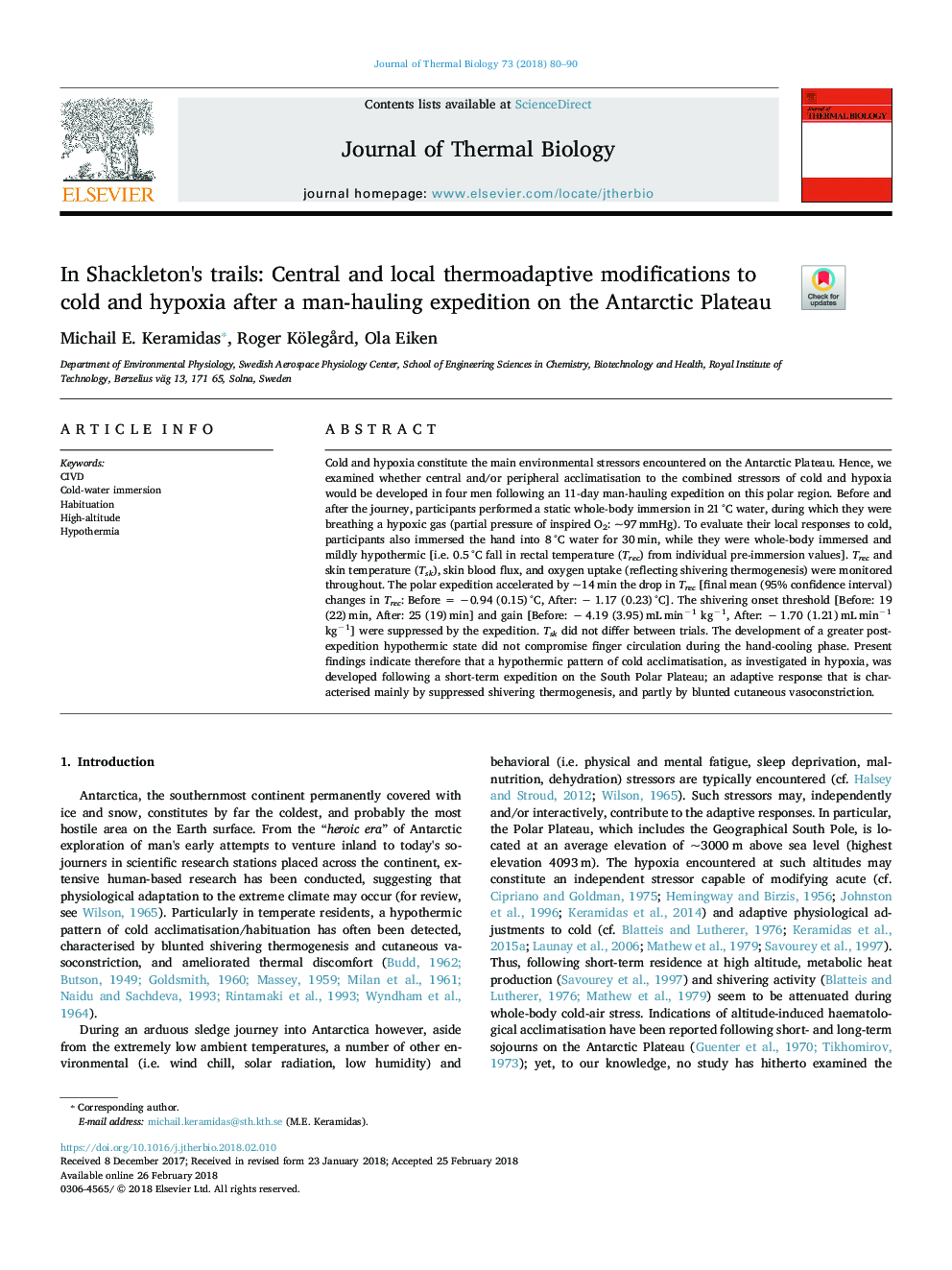| Article ID | Journal | Published Year | Pages | File Type |
|---|---|---|---|---|
| 8650083 | Journal of Thermal Biology | 2018 | 11 Pages |
Abstract
Cold and hypoxia constitute the main environmental stressors encountered on the Antarctic Plateau. Hence, we examined whether central and/or peripheral acclimatisation to the combined stressors of cold and hypoxia would be developed in four men following an 11-day man-hauling expedition on this polar region. Before and after the journey, participants performed a static whole-body immersion in 21â¯Â°C water, during which they were breathing a hypoxic gas (partial pressure of inspired O2: ~97â¯mmHg). To evaluate their local responses to cold, participants also immersed the hand into 8â¯Â°C water for 30â¯min, while they were whole-body immersed and mildly hypothermic [i.e. 0.5â¯Â°C fall in rectal temperature (Trec) from individual pre-immersion values]. Trec and skin temperature (Tsk), skin blood flux, and oxygen uptake (reflecting shivering thermogenesis) were monitored throughout. The polar expedition accelerated by ~14â¯min the drop in Trec [final mean (95% confidence interval) changes in Trec: Before =â¯â0.94 (0.15)â¯Â°C, After: ââ¯1.17 (0.23)â¯Â°C]. The shivering onset threshold [Before: 19 (22)â¯min, After: 25 (19)â¯min] and gain [Before: ââ¯4.19 (3.95)â¯mLâ¯minâ1 kgâ1, After: ââ¯1.70 (1.21)â¯mLâ¯minâ1 kgâ1] were suppressed by the expedition. Tsk did not differ between trials. The development of a greater post-expedition hypothermic state did not compromise finger circulation during the hand-cooling phase. Present findings indicate therefore that a hypothermic pattern of cold acclimatisation, as investigated in hypoxia, was developed following a short-term expedition on the South Polar Plateau; an adaptive response that is characterised mainly by suppressed shivering thermogenesis, and partly by blunted cutaneous vasoconstriction.
Related Topics
Life Sciences
Agricultural and Biological Sciences
Agricultural and Biological Sciences (General)
Authors
Michail E. Keramidas, Roger KölegÃ¥rd, Ola Eiken,
